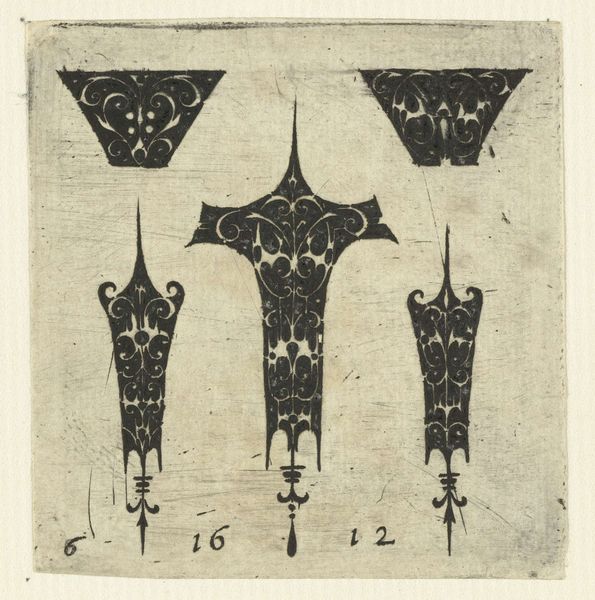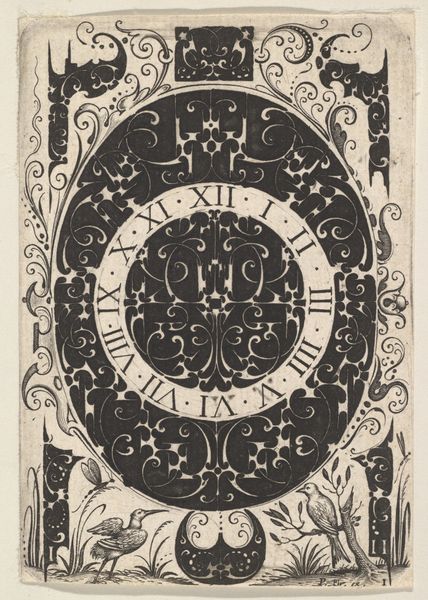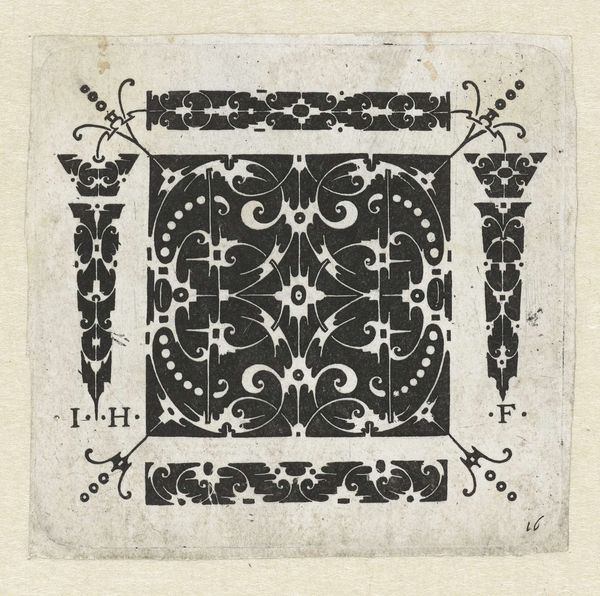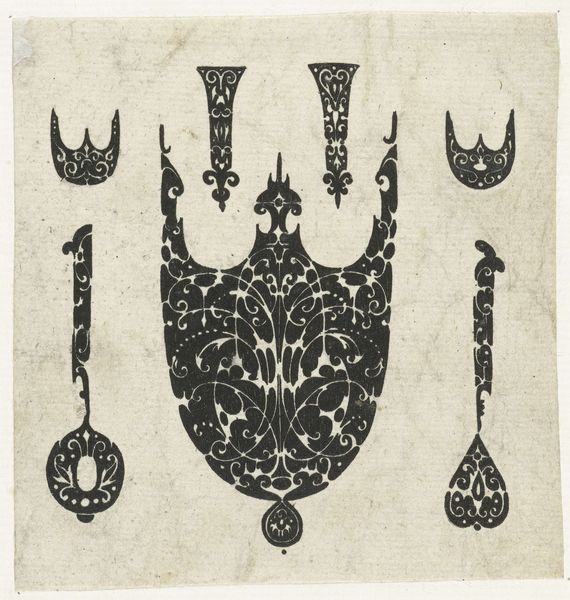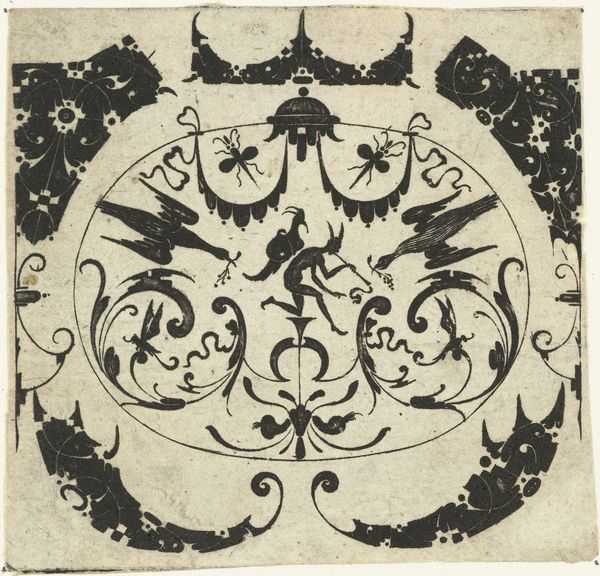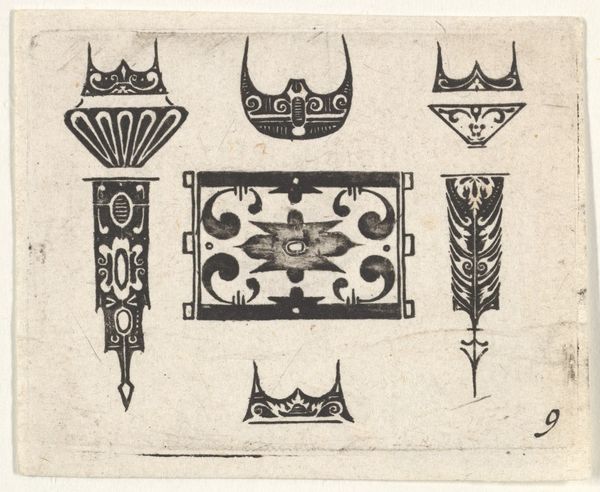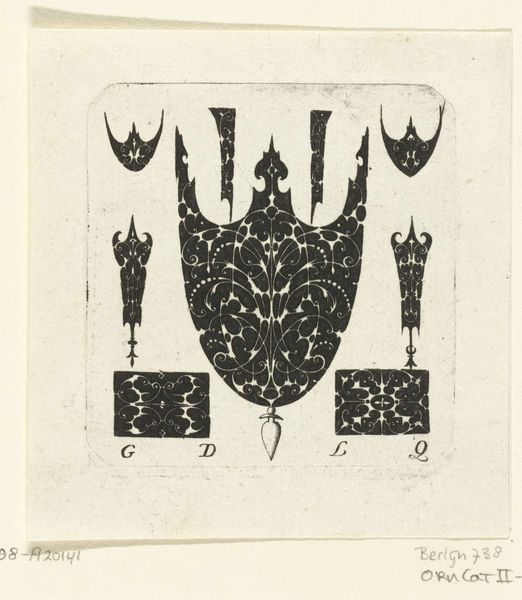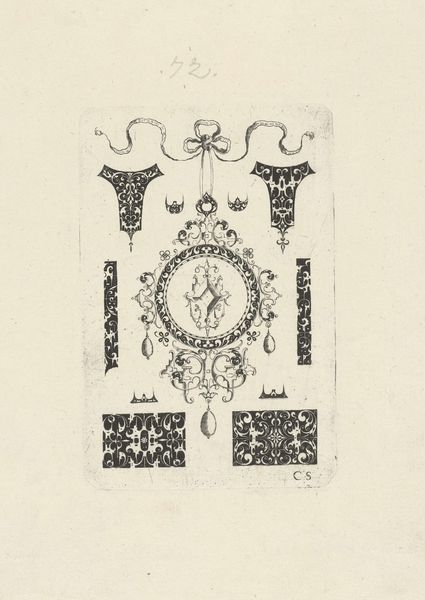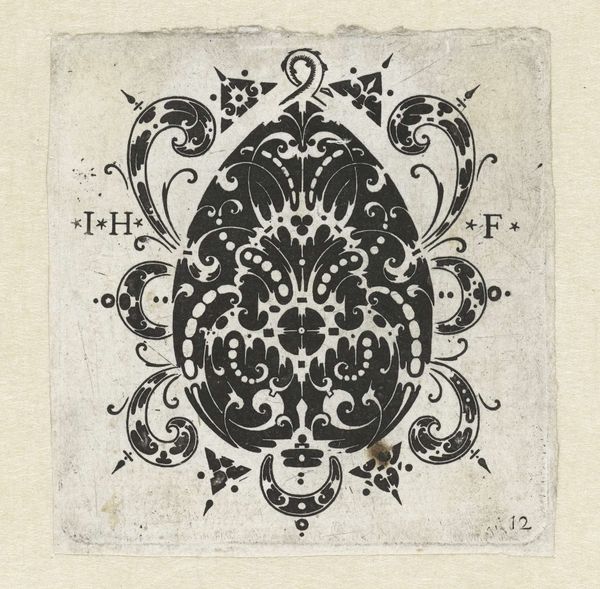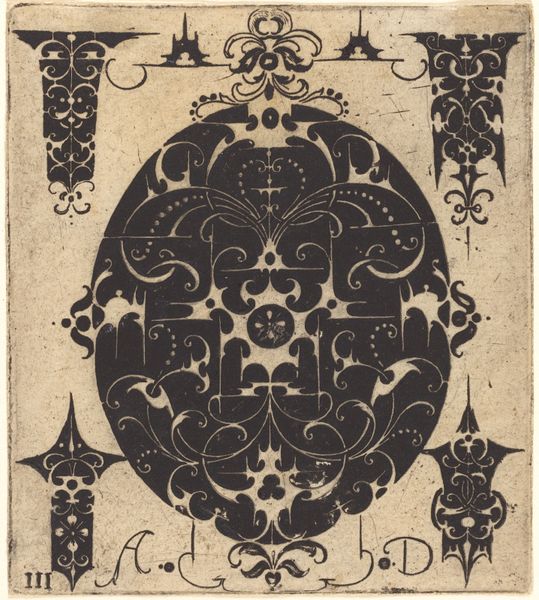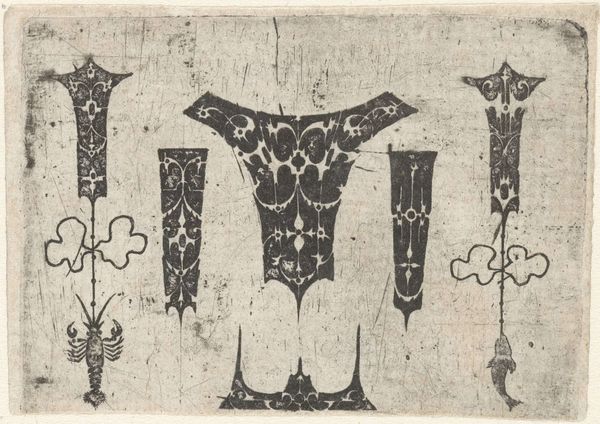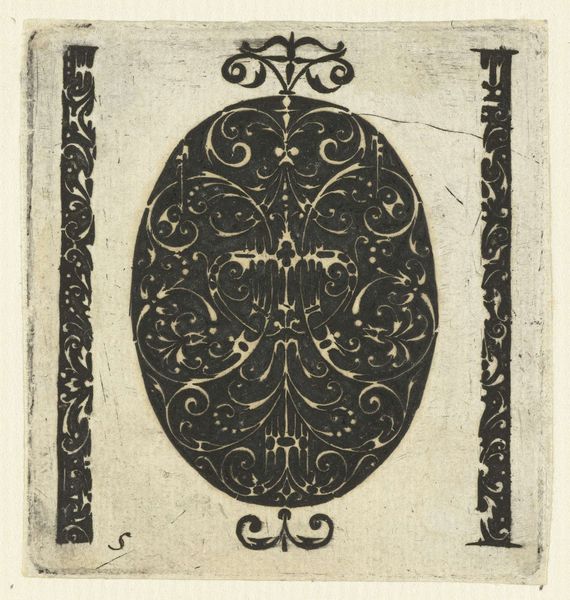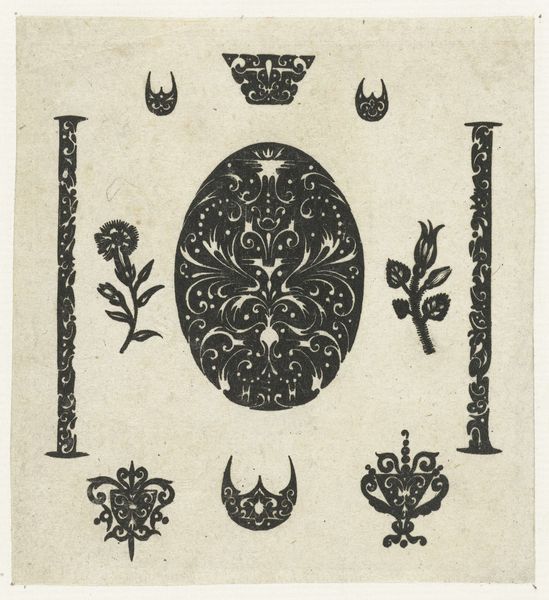
graphic-art, ornament, print, engraving
#
graphic-art
#
ornament
# print
#
old engraving style
#
linocut print
#
geometric
#
line
#
northern-renaissance
#
engraving
Dimensions: height 57 mm, width 55 mm
Copyright: Rijks Museum: Open Domain
Editor: We’re looking at "Ontwerp voor ovale rand van wijzerplaat en zes ornamenten," or "Design for an Oval Clock Face Border and Six Ornaments," made around 1612. It's an engraving. It's giving me a very stylized, almost mathematical vibe. What strikes you about this piece? Curator: Formally, I'm drawn to the interplay of positive and negative space. The stark contrast created by the engraving technique emphasizes the intricate linear quality of the design. Observe how each shape, while distinct, relates to the whole through the careful repetition and variation of form. Editor: I see what you mean. The circular shapes echo each other, even in the "crown" shapes above and below. Is that repetition important? Curator: Precisely. Repetition establishes rhythm and unity. Consider also the texture achieved through the varying densities of the engraved lines. Notice how the artist uses hatching and cross-hatching to create a sense of depth and volume despite the work being primarily linear. Editor: So it's less about what these designs *represent* and more about how they're put together? Curator: To an extent, yes. One can explore semiotic implications within these shapes, though. What could you suggest? Look carefully at the center ovals with repeating floral elements; this suggests perhaps a type of formal emblem with underlying meaning. Editor: That's interesting, I never considered approaching ornament in that way. Curator: Indeed, this work highlights how careful observation and formal analysis can reveal the structure and, thus, an understanding of design beyond its mere representational function. The interplay of the shapes implies that close observation is not only sufficient, it’s rewarding.
Comments
No comments
Be the first to comment and join the conversation on the ultimate creative platform.
